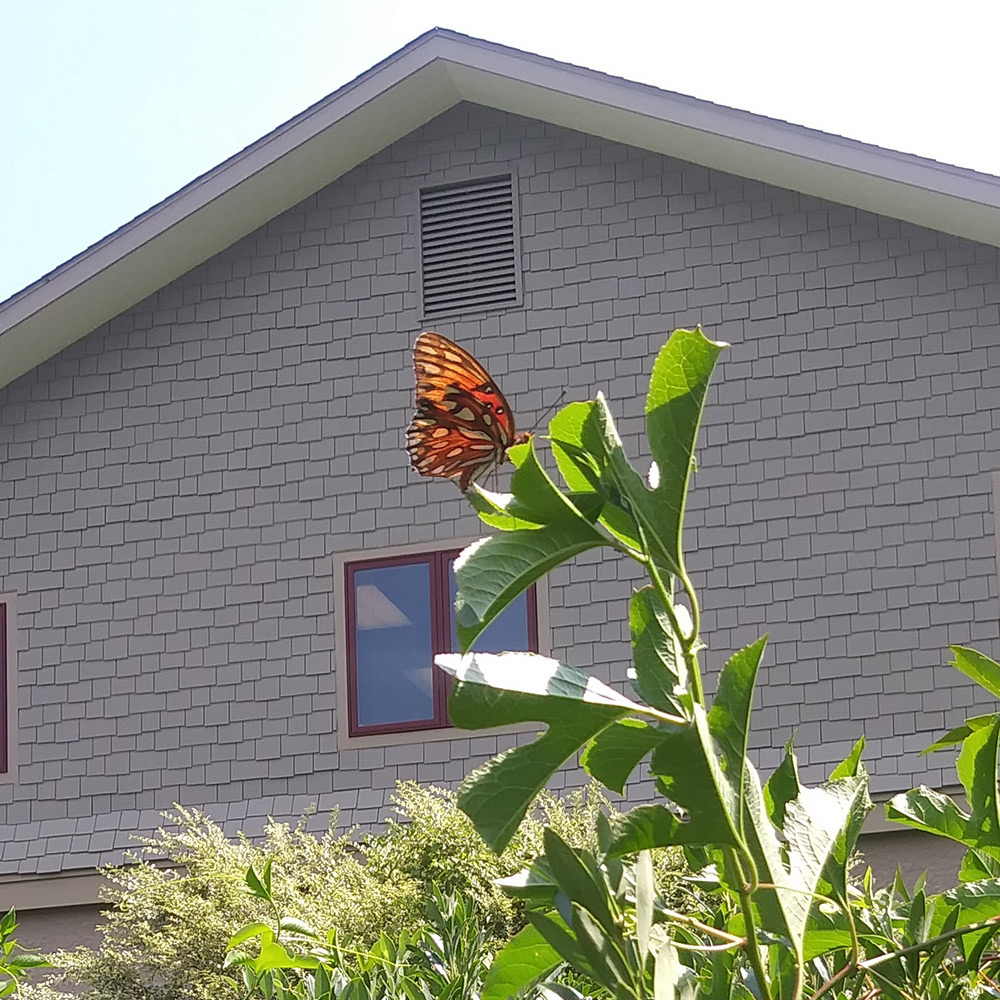Preparing for the annual autumn migrations
By Torry Nergart, Stewardship Manager at Conserving Carolina.

The fall equinox happened Sept. 23 and now we all find ourselves with less daylight, temperatures dropping into camping weather and wildlife on the move.
Though this season is all about harvesting and storing reserves for winter, many animals are migrating toward resources to sustain them through their life cycles. There are fewer and fewer reports of visits to the hummingbird feeders as those birds are well on their way to Mexico and the central American countries and other migratory songbirds passing through are taking advantage of whatever berries, seeds, insects and flowers they can find.
That is why fall is a great time to plant native perennial sunflowers and asters, native trees that provide both food and shelter, as well as shrubs like chokecherry and American beautyberry.
Monarch butterflies are making their way through Transylvania County at the time of this publication and meadows along the Blue Ridge Parkway will provide much-needed nectar to sustain them on their multi-thousand mile migration to the oyamel fir forests of Mexico.
Let’s not let the Monarch steal the show, though!
Several other species of butterflies also make long migrations in order to complete their life cycles and one I have been seeing lately is the cloudless sulphur (Phoebis sennea), a charismatic nearly all yellow, large butterfly with a seemingly erratic flutter pattern. While it may look like they are being tossed about while flying, these insects have the advantage of being hard to track by a zooming predator.
Similar to the monarch butterflies, cloudless sulphurs eat specific plants (in this case, senna and cassia) when they are caterpillars that make them toxic to predators. As adult butterflies, they are able to recognize and utilize flowers in specific ways; they tend to prefer red flowers and have even been documented trying to drink nectar on car taillights!
Sulphurs will also use yellow flowers as camouflage while resting along their migration journey that typically takes them from Maine to Florida. In another similarity to monarch butterflies, the places sulphurs migrate to on both ends of that journey have pressing threats of habitat loss.
Another butterfly migrating back to Florida right now is the Gulf fritillary (Dione vanilla) or “passion butterfly.” If you have had the forethought to plant the passionflower vine, you may have a great chance to see this species because just like the monarch Gulf fritillaries use a specific host plant to raise their caterpillars.
It is thought the passionflower vine emits a certain chemical signature that the butterfly has adapted their antenna to recognize. In this migration, Gulf fritillaries expand out from their central Florida home into habitat in other southeastern states to raise new generations before going back into Florida for the winter.
While monarchs and hummingbirds attract a lot of attention, don’t get myopic about all the great migrations taking place during fall.
Nutrients and sugars are migrating down the twigs of tall oaks down to their roots and wind-borne seeds have shuffled off into the breeze. Box turtles will lumber about looking for the ideal spot for brumation season in advance of winter while many of the pollinators that fertilize our crops and gardens will burrow into the soil or leaf litter.
Some pollinators will take refuge in hollow or pithy stems of herbaceous plants, so if you can bring yourself not to tidy up a garden or bush hog the meadow until the first few warm days of early spring you will be doing a great service to pollinators.
Nature is always on the move, so take the time to slow down and observe the big hustle and bustle going on now. Migrations allow us glimpses into natural processes that not only cover great distances, but have evolved over periods of time. To be a point on that great arch is our deep privilege.